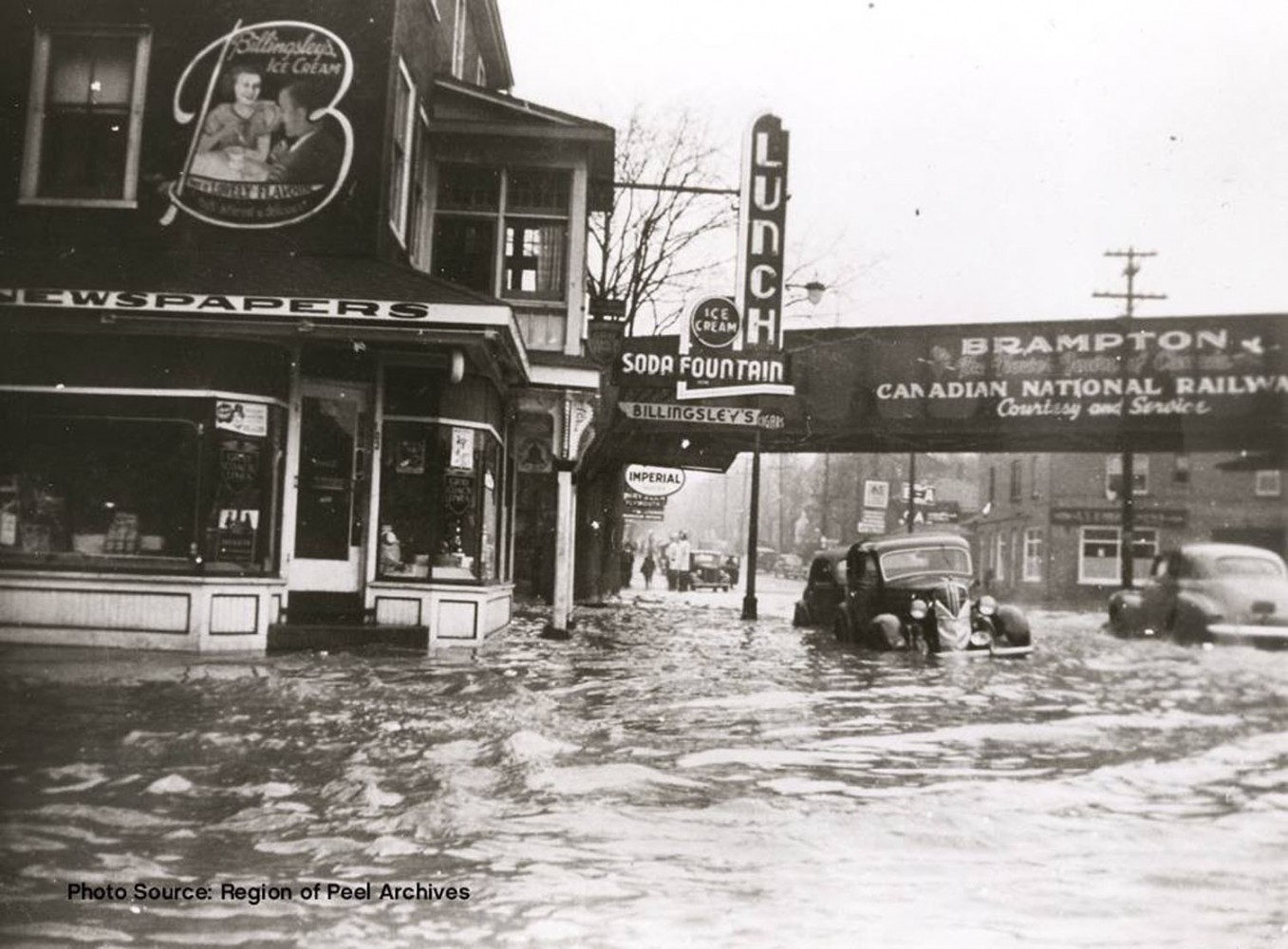
Completely eliminating downtown’s flood risk is impossible, study finds, but $106 million could help
To protect downtown Brampton from the destructive potential of future flooding, a numbers of expensive measures are needed in order to redirect flood water away from the city centre, including new bridges, valley widening, and relocating a city street, all of which will cost millions of dollars, according to the recently released draft environmental assessment for the Riverwalk project.
The City of Brampton, in partnership with the Toronto Region Conservation Authority (TRCA), has been studying the downtown floodplain, as part of the Riverwalk project, in an attempt to find solutions to protect the area. Such a solution would allow the province to lift its Special Policy Area (SPA) designation over 31 hectares of downtown Brampton, which heavily restricts development and has long been viewed as handcuffs on the city centre’s economic potential.
According to numbers from the City of Brampton, if the SPA were to be lifted, it would allow space for 18,000 additional people downtown, and 23,800 jobs once the Riverwalk project is fully implemented.
The results of the EA study were presented to the public in December 2019, and now the documents, in draft form, are available for public comment until the end of the month on the TRCA website (click here).
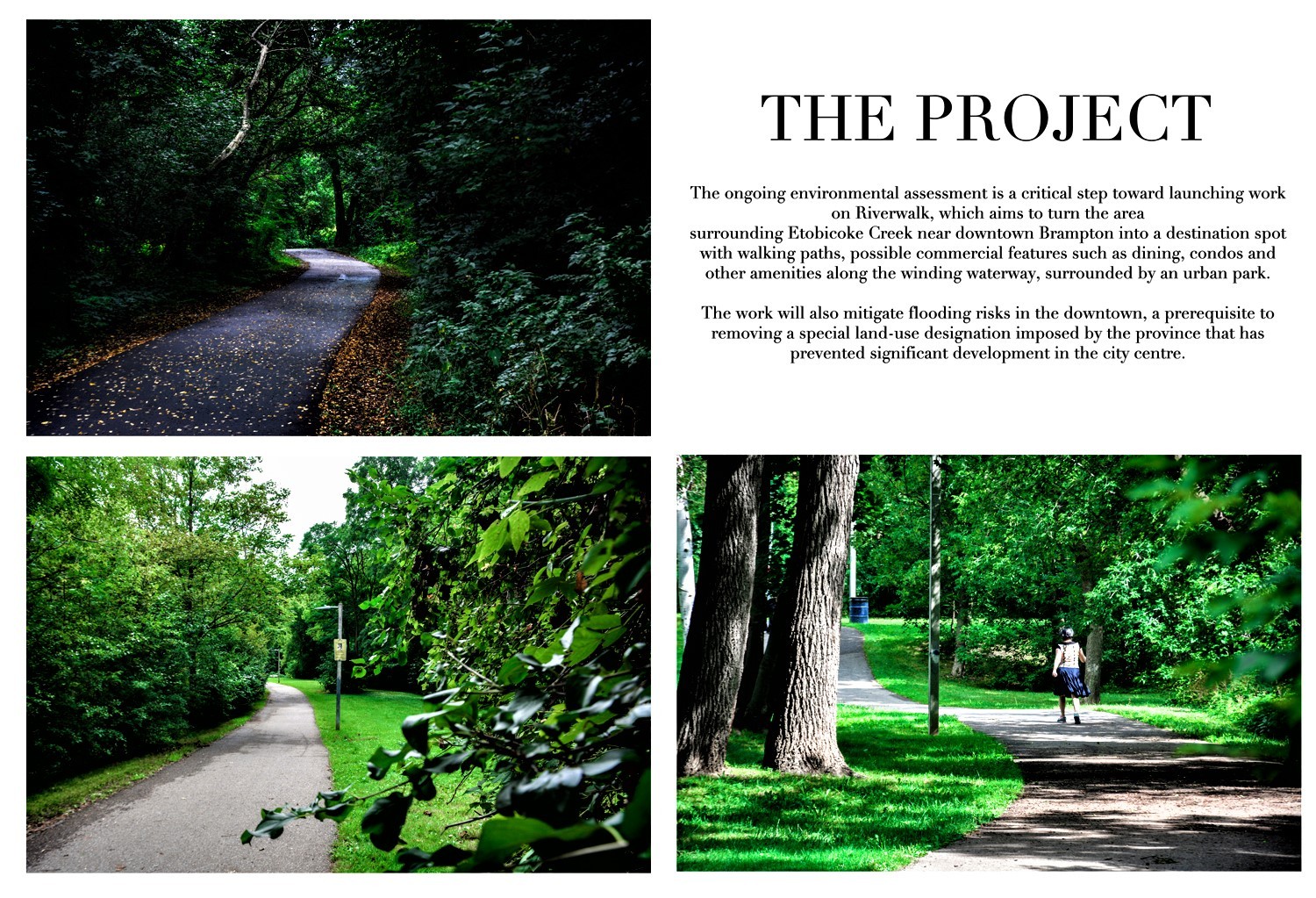
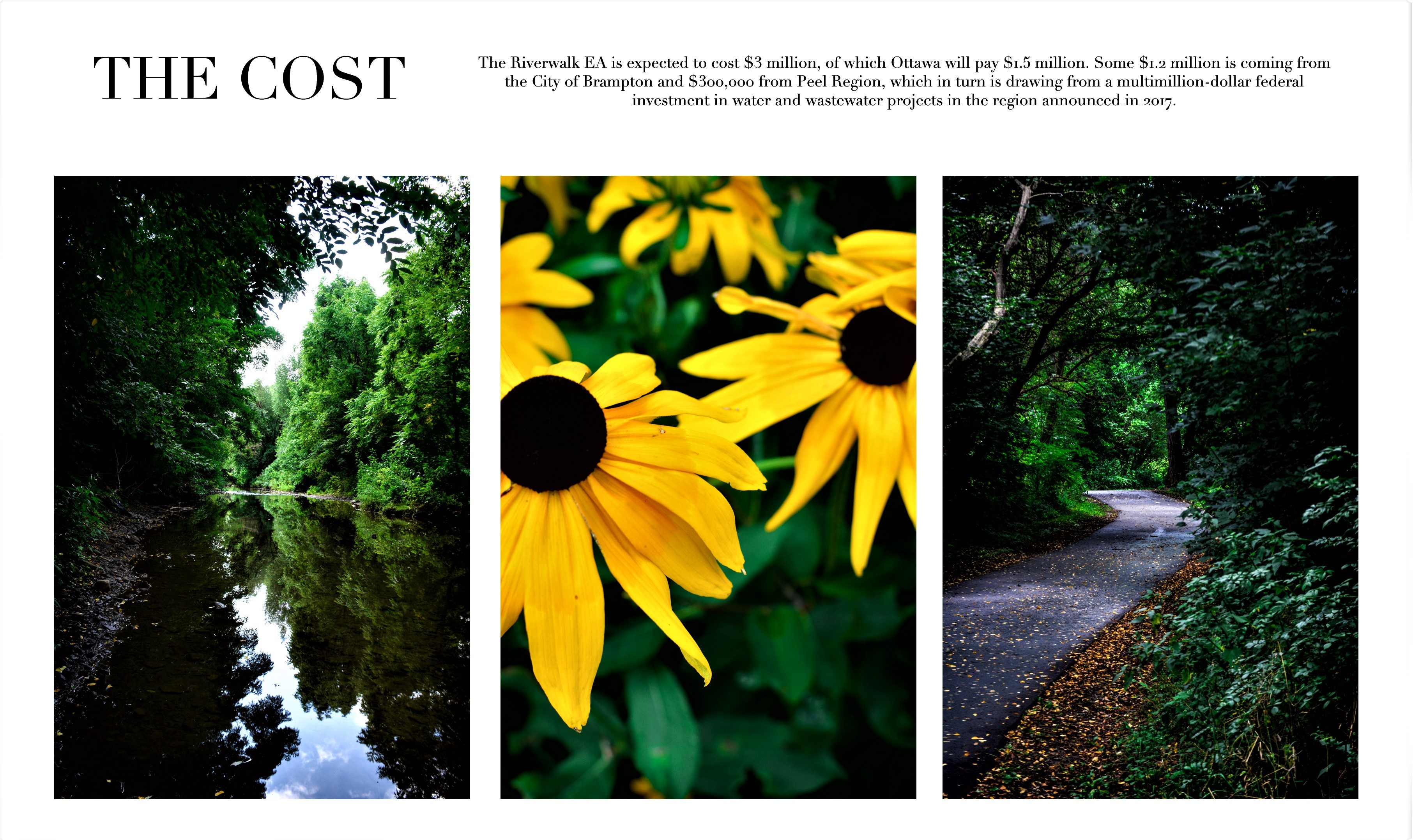
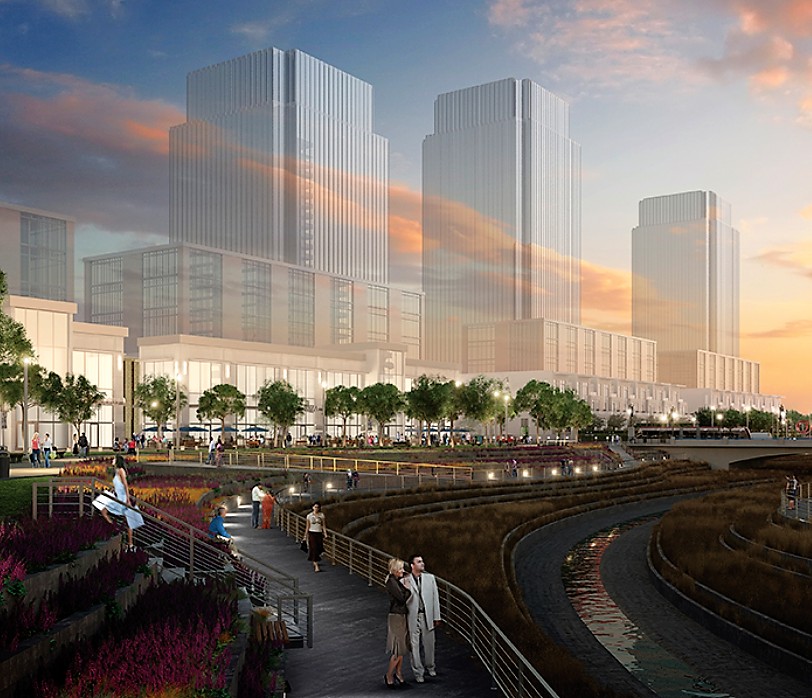
A number of options are presented in the documents, including potential landscape alterations both upstream and downstream of the city centre. The preferred option will cost between $85 million and $106 million, the study predicts.
Currently, flood mitigation efforts downtown are limited to the concrete bypass channel for Etobicoke Creek, infrastructure owned by the TRCA. As part of the preferred option, this channel will be widened in order to accommodate a larger amount of water in the event of a “regulatory flood,” measured as a Hurricane Hazel-level storm, the largest storm in Ontario’s recorded history.
A significant obstacle in the way of this is Ken Whillans Drive, which, if the option is eventually accepted by the province, will need to be realigned, along with the watermain and other infrastructure that lies beneath it, to make room for the widened valley. At the same time, bridges at Church Street, Scott Street, and Queen Street will need to be redesigned to accommodate for a larger flow of water beneath them and to span the wider valley. Modification will also be needed on the CN rail bridge that crosses the bypass channel, but it’s unclear who would be responsible for making these changes. The bypass channel will need to be widened by approximately 10 metres, resulting in long-term impacts to the surrounding area, including loss of habitat along the creek.
According to the documents, the widening will also require the acquisition of several properties, including one property on the west side of the channel, south of Scott Street, and two on the east side (one residential and one business), south of Queen Street. Portions of properties on Nelson Street East, John Street and a woodlot next to the retirement residence on Ken Whillans Drive will also need to be acquired as part of the work.
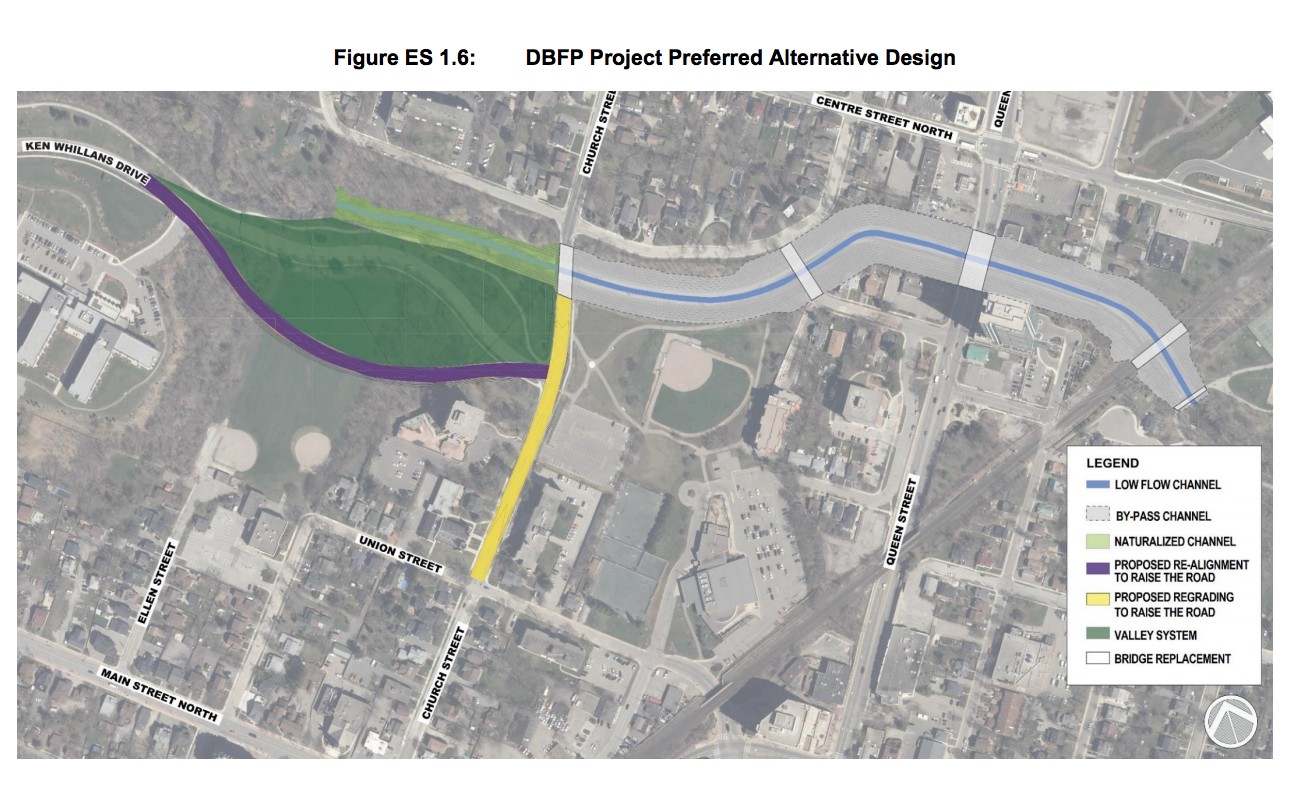
A graphic depicting the proposed realignment of Ken Whillans Drive (in purple).
The construction activities will also cause the displacement of marked and unmarked graves at the St. Mary’s Roman Catholic Cemetery. Discussions with the Bereavement Authority of Ontario, the organization responsible for such matters, are currently underway on how to proceed with this issue.
Following the 30-day review period, any comments received on the draft report will be implemented into the document and a final version of the report will undergo the same 30-day public review period, tentatively scheduled for March.
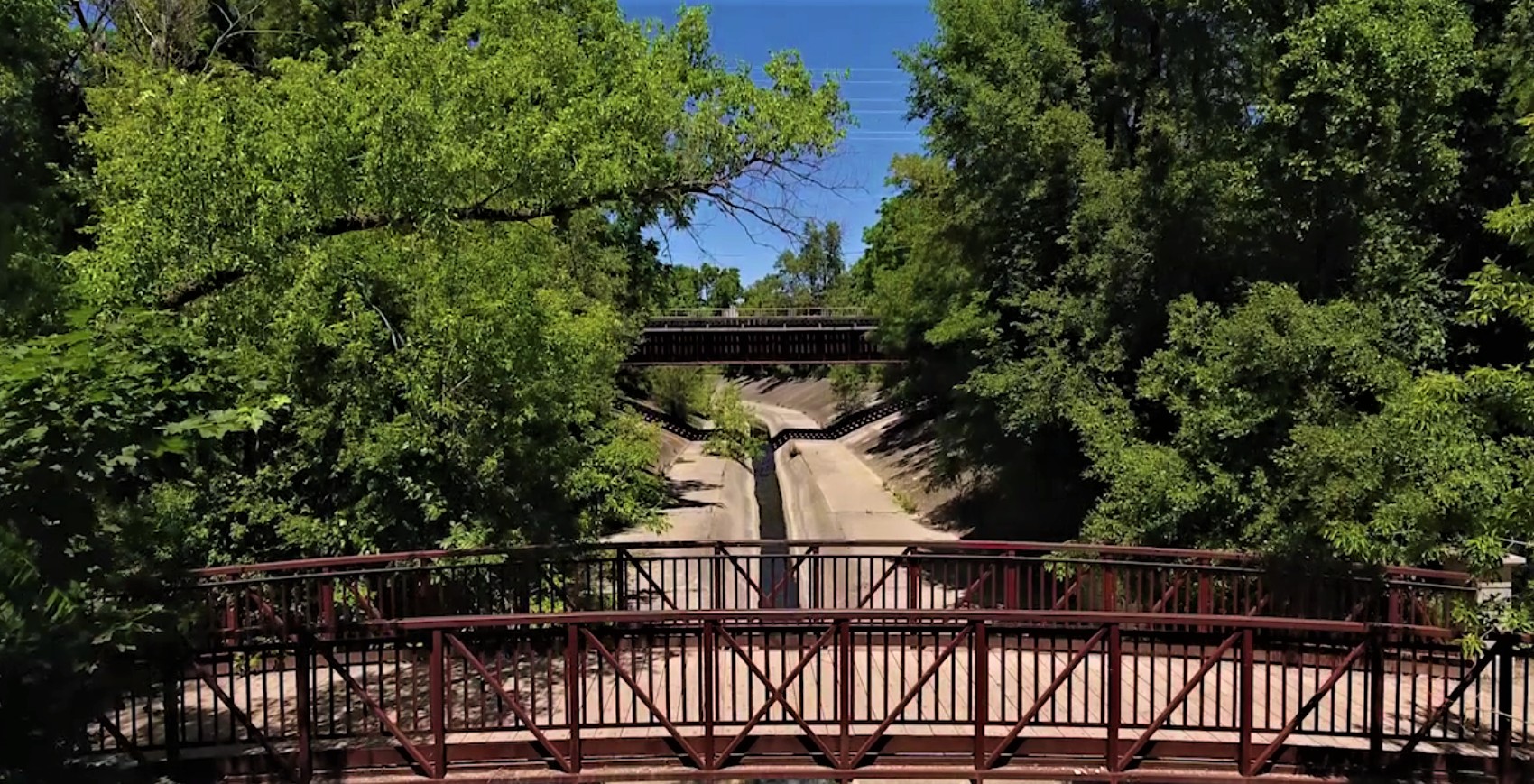
The existing Etobicoke Creek by-pass
In total, 31 hectares of the city’s downtown are currently listed under the SPA. Interestingly, the preferred option for the EA would only allow for 19 hectares to be removed from the designation. The main culprit is a pair of old landfill sites downtown, which are posing some difficulties.
“It is not possible to remove all 31 hectares from the floodplain. The EA looked at various options to do this, including creating more floodplain storage through Centennial Park by removing the old landfill site,” states Natalie Stogdill, a spokesperson for the City of Brampton. “There is a significant environmental impact from removing the landfills, and given that this area within the floodplain is not part of a Provincial Urban Growth Centre, the evaluation process concluded that existing SPA policies should continue to prevail in the remaining 12 hectares.”
This may be for the best, as the initial study of old landfills made some discoveries that are perhaps best left buried.
“It should be noted that during the drilling of (a) borehole, a black tar liquid-like substance was recorded within the refuse at approximately 3.66m to 6.10 m BGS (below ground surface),” the documents read. “A soil sample collected from the underlying sand and gravel fill identified the presence of semi-volatile organic compounds (SVOCs)/PAHs, polyhalogenated compounds (PVCs) and VOCs (volatile organic compounds). This contamination was not encountered in any nearby boreholes; however, full delineation of the contamination was not conducted.”
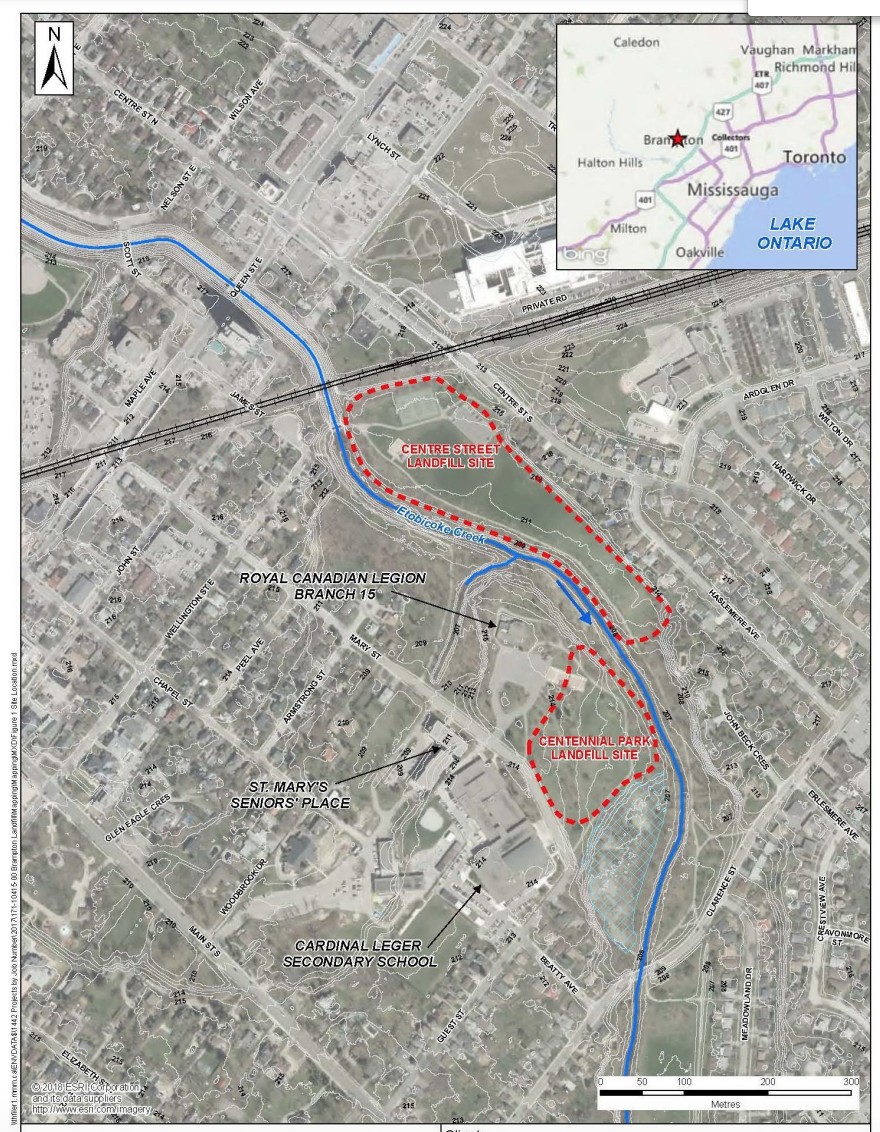
The two former landfill sites in downtown Brampton.
While the near completion of the study finally answers questions that have been hanging over downtown Brampton for years, there are still many unknowns in the project’s future. First and foremost, where the city will come up with the funds to pay for it remains unseen.
The city’s 2020 budget does not provide, or set aside, any funding for the project until 2022, where only $500,000 is designated for environmental engineering work. Furthermore, while the $86 million to $106 million price tag set out in the report would be a tough pill for the city to swallow by itself, a spokesperson confirmed that it doesn’t even account for the grand vision for the Riverwalk project, which would turn the area along Etobicoke Creek into Brampton’s Central Park, with walkways, parks, green spaces, and other pedestrian friendly infrastructure, something that could require hundreds of millions of dollars more.
While the city does have debt capacity to handle the project, with construction scheduled to begin in 2022 — a municipal election year — it’s highly unlikely Mayor Patrick Brown, who campaigned on a low-tax campaign and implemented a tax freeze in 2019, would see this is a favourable option.
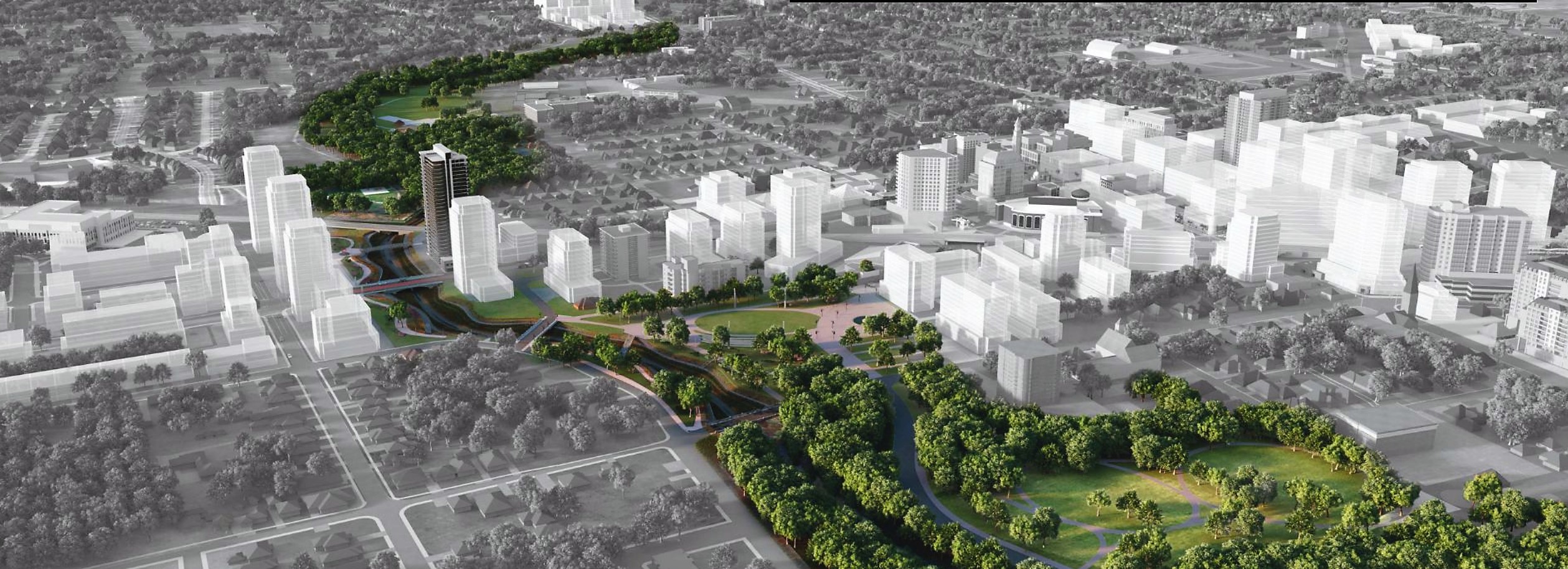
It’s more likely the city will cross its fingers and hope for further support from the federal and provincial governments to help fund the project. Stogdill says Brampton previously applied for funding from the federal government and Infrastructure Canada, and while the city was encouraged by the reception the project received from the feds, it was denied due to the work being several years away. The city is prepared to apply for the same funding this year.
“The City will be making an application for Disaster Mitigation & Adaptation Fund (DMAF) once the process opens up this year,” says Stogdill. “In summer 2018, the City of Brampton submitted an expression of interest (EOI) application for $105 million in funding through the DMAF. Riverwalk was deemed eligible, however due to high demand, only projects starting in 2019 and 2020 were selected.”
The EA process up to this point has already received $1.5 million from Ottawa, accounting for about half of the expected $3 million cost. Some $1.2 million is coming from the City of Brampton and $300,000 from Peel Region, which in turn is drawing from a multimillion-dollar federal investment in water and wastewater projects in the region, announced in 2017.
Assuming the City of Brampton is approved for the $105 million federal grant, there will still be some in the city’s financial department feeling a little anxious. The $105 million would require the city to come up with $1 million — if the project reaches the $106 million estimated threshold — or perhaps even more than that.
Project cost estimates are just that, estimates, and the more time in between making those educated guesses and the eventual start of the project, makes them increasingly unreliable.
Take for example, the Downtown Reimagined project, a collaborative effort between the City of Brampton and the Region of Peel to restore aging infrastructure in the city’s downtown and revitalize the streetscape. The project was put on hold late in 2018 due to a number of unknowns, including costs.
The city budgeted about $30 million in “borrowed financing” for the project, with approximately $2.5 million of that dedicated to the initial EA and planning, which has already been completed. This initial budget appeared to be more than enough to cover the cost of the project estimated at $23 million.
However, jaws hit the floor when the initial bids on the project were received.
Each of the four bids received in response to the region’s tender came in above the city’s budgeted amount, ranging from $55 million to $73 million. Under the joint contract with the region, the city would be solely responsible for between $36 million and $45 million of that total, depending on which bidder was selected.
The fate of Downtown Reimagined remains in limbo — the project is not mentioned in the city’s 2020 proposed budget — and highlights how project cost estimates do not always line up with the bids when the project goes to tender.
According to Stogdill, the tendering process for the flood mitigation work is still to be determined.
Email: [email protected]
Twitter: @JoeljWittnebel
Submit a correction about this story


